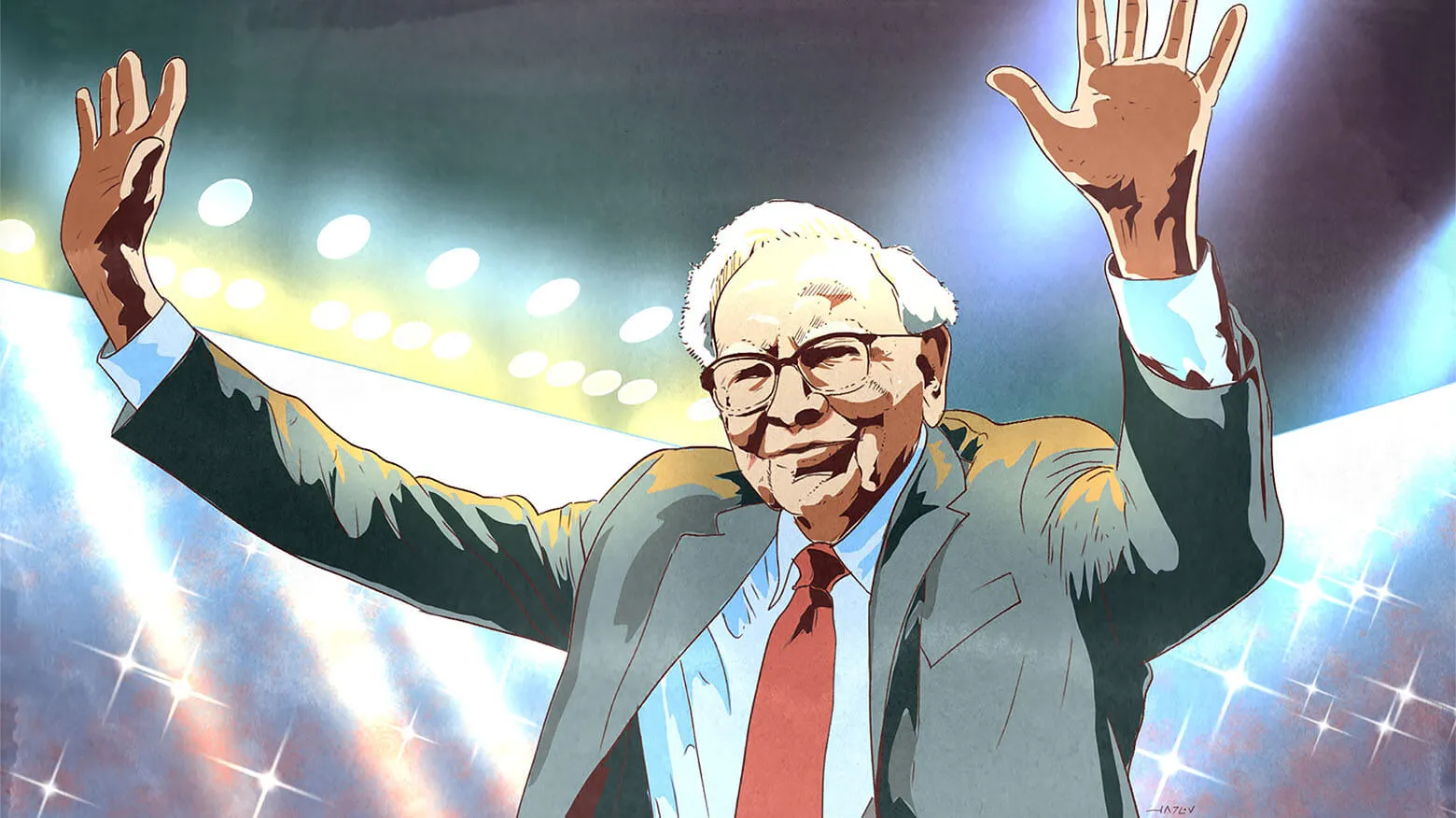Excerpt from my Summer Client letter 2023.
Every Friday night when my family sits down for dinner, I look at my kids and remind myself how lucky I am. My older kids, 17-year-old Hannah and 22-year-old Jonah, are turning into incredible young adults with many qualities I want to emulate.
They are becoming my role models!
Jonah recently installed parental controls on his phone (completely on his own!) to limit his use of social media. He replaced that time with reading. I was inspired by Jonah and slapped parental controls on my ph0ne, too. Hannah is reading Dale Carnegie and actively applying the concepts she’s learning to her daily life. Mia Sarah is only nine years old, but I can already see the potential for kindness, endless curiosity, and resilience in her.
Today, when I look at my kids, I experience an abundance of parental pride.
This was not always the case, especially with Jonah. I have written about this many times before. In his junior year of high school, he had a victim mentality. He had a 1.3 GPA, and he blamed his bad grades on everyone else but himself. I was only slightly worried, because I saw a huge potential in him and felt he would be okay. Sure enough, in his senior year he matured and had a 3.9 GPA for that year, and now he is a magna cum laude student at CU Boulder.
Recently, as I was reviewing our portfolio, I experienced a similar parental feeling of pride. A number of our companies whose businesses were stuck in their “junior year” for a while have matured into their “senior year.”
There is of course a significant difference between companies in the portfolio and kids: We don’t get to choose our kids, while we carefully choose our companies. Also, we cannot dispose of our kids, but we can sell our companies.
There is another nuance here. Many times, we bought these companies because they were in their “junior year”; this is what made them undervalued. Our research led us to the conclusion that their difficulties were transitory and that as they matured the market would revalue them.
Uber (UBER)
We bought UBER when the stock was universally hated. (Read my in-depth write up here). This is the only time I can recall a handful of clients reaching out to inquire if my kids were making investment decisions for me. I ended up writing a very lengthy essay explaining our thinking behind the purchase. Of course, the timing of the purchase could not have been any worse: We bought it a few weeks before the pandemic engulfed the global economy and shut it down.
Fast-forward a few years. Uber has proved to be an antifragile business that came out of the pandemic much stronger – it reduced its workforce by a quarter, and its food delivery business mushroomed. Uber was aggressive in bringing drivers back on its platform as the economy opened up, and thus it took market share from now-struggling Lyft. Revenues have been growing at a very fast pace – last quarter they were up 29%. The company is finally cash-flow-positive; it is not relying on the kindness of strangers (equity or debt markets).
Innovation and constant improvement are signs of a great company. Here is a recent example that parents of teens may appreciate. Until recently, you had to be 18 years old to use Uber rideshare. Now, teens aged 13 to 17 can be added to their parents’ accounts. When they request an Uber, their parents are alerted. The teen is matched with the highest-rated driver available, one who has been on the platform a long time. The parent can monitor their child’s location at all times. Additionally, audio allows parents to listen to conversations in the car. Although this product only addresses 13% of the US population, that is the 13% who desperately needed transportation but until now had to rely solely on their parents. No more.
Uber’s business is approaching escape velocity: The growth of costs significantly lags revenue growth and thus profitability is exploding to the upside. At the current price, the market capitalization of the company is about $75 billion (this is what it would cost us to buy the whole company). Analysts project Uber to generate free cash flows and net income north of $7.5 to $10 billion in a few years. This is in line with our analysis. As the company starts gushing cash flows, we expect the stock to rerate much higher. If it achieves the aforementioned cash flow estimates and trades at 15-20x free cash flows, the stock will double or triple.
Uber’s growth is unlikely to be linear, but we see it as an inevitable business. You don’t need to have a rich imagination to see that rideshare, which is gradually becoming woven into the fabric of our society, will be used a lot more in the future, not less.
Uber, which was seen as a potential dropout by many of our clients, is steadily progressing from junior to senior year.
Qualcomm (QCOM)
QCOM’s core mobile phone business is facing maturity. However, the company has been investing in businesses that have significant growth ahead of them.
QCOM has a very strong position in the automotive industry. I visited QCOM headquarters in San Diego in 2016, and even then they were discussing the digital car. Today, QCOM is the only company that offers a complete digital solution for automakers. They call it the digital chassis.
Automakers, with the exception of Tesla, are not good at software or technology in general; they are good at making mechanical parts. This is where QCOM comes in. QCOM’s digital chassis allows GM, Ford, and others to build a digital, software-defined car (think Tesla). QCOM provides customizable modules that come with an operating system, software, CPUs, modems, and sensors. Automakers can customize these modules to create their own look and feel.
Tesla showed traditional automakers what the future car looks like: a computer on wheels. QCOM is their best chance to develop one.
Years and billions of dollars invested in this segment are paying off: QCOM has announced that they have a $30 billion pipeline in this business.
QCOM’s strategy in this business is brilliant. They have a working development partnership with BMW. BMW knows what its customers want, and QCOM knows how to develop it. BMW gets QCOM’s intellectual property for free, in exchange for QCOM getting one of the best automaker’s contributions to its technology.
Electric cars consume about 10-15 times more digital content (hardware and software) than traditional cars. As the mix of cars shifts to EVs, so will QCOM’s revenue in this segment. QCOM is guiding for $10 billion in automotive revenue by 2028.
QCOM has a good chance of making significant inroads into laptop CPUs. I am writing this on an Apple MacBook Air, which is powered by Apple’s custom-developed M1 chip based on the ARM architecture. Apple dropped Intel’s x86 chip and developed its own. The battery life of this MacBook is 18 hours; I was lucky to get three hours out of my Lenovo Windows laptop. I cannot tell you how liberating it is not to worry about charging your laptop.
A year ago, QCOM bought a company that was started by the Apple engineers who created the M1 chip. QCOM is working in collaboration with Microsoft to create a chip based on the ARM architecture that would power the next generation of laptops. It should be out in 2024. It should have a similar battery life to MacBooks. These sales will be completely complementary to QCOM.
AI is all the rage today. Well, QCOM has a play there, too. It is creating processors that speed up AI processing on phones. As I understand, as of today QCOM is the only company that has a phone processor with this capability.
QCOM dominates the AR/VR space with its microchips. It is also the largest beneficiary of the Internet of Things (IoT). For example, QCOM chips can be used in connected street lights that tell cars if the light is green or red, connected industrial equipment that notifies if a part is about to wear out, and connected cattle that allow farmers to easily find a wandering cow.
The beauty of owning QCOM is that it is a forward-thinking company with an incredible competitive advantage (enormous IP, economies of scale, massive R&D), good balance sheet, and great management. The short term is likely going to be a bit rocky for QCOM, which is why the stock is down. The company is dealing with an oversupply of microprocessors due to the pandemic and the shutdown and reopening of China. Long-term, its future looks very bright. As of this writing the stock is at $120. We think near-term earnings are about $9 or so; however, we conservatively estimate earnings four years out at about $13. At 15 times earnings we get a $200 stock.
Some additional thoughts, not from the IMA client letter
I always experience a low level of anxiety when I share my stock write-ups, usually from my client letters, with my readers. I fear that someone will read my write-up and blindly buy the stock. When we buy a stock, we should consider how it fits into our portfolio; new data may come out and we may change our mind. Also, I rarely discuss position sizing.
Let me explain.
We assign a target weight for each stock based on its discount to fair value. For example, if we believe a company is worth $100, our target position size at $70 will be 3%; at $50 it will be 4%; and at $30 it will be 5%. Though these are not actual discounts, they are directionally correct.
We apply this methodology to the whole portfolio, one stock at a time.
Qualcomm, for instance, is a 2-3% position in our portfolio, though you would not know this from my write-up. The position sizing for Uber fluctuated significantly with its price; we were buying a much larger position at $26 than we are today at $44. These nuances are important, but they are often lost when I (and most investors) discuss individual stocks.
Also, what is lost in my, or anyone else’s, individual stock write-ups is how we investors got to our conviction. There is a saying, “Life is not about the destination, but about the journey.” This is also true for investing. There is tremendous value in doing research: reading annual reports, studying the industry, listening to earnings calls, and building financial models. Doing these activities gives you a tactile sense of the company, something you cannot acquire from someone else’s write-up. This feeling (conviction) can only be earned through doing the work.
Key takeaways
- You view some of your portfolio companies as “growing stocks” that have matured from their “junior year” struggles into more promising “senior year” performance, similar to how you’ve seen your children grow and mature.
- Uber, once a universally hated stock, has become a growing stock by proving its antifragile nature, achieving profitability, and showing potential for significant future growth in rideshare and food delivery markets.
- Qualcomm, despite facing maturity in its core mobile phone business, has become a growing stock by investing in promising new areas such as automotive technology, laptop CPUs, AI processing for phones, and IoT applications.
- When discussing growing stocks like Uber and Qualcomm, you provide insights into their business models, growth potential, and valuation estimates, but caution that these write-ups don’t capture important nuances like position sizing within a portfolio.
- You emphasize that the journey of researching growing stocks is as valuable as the destination, providing investors with a deeper understanding and conviction that can’t be gained from simply reading others’ stock write-ups.









0 comments